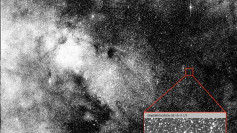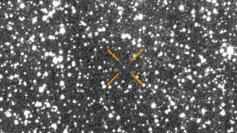The interstellar object 3I/ATLAS has reappeared in Earth's skies after completing its close pass around the sun, offering astronomers their first clear post-perihelion images of the comet as it rises again into morning visibility. The observations, confirmed over the weekend from Lowell Observatory in Arizona, mark a key milestone in the study of the third known interstellar visitor to enter the solar system.
The new images were captured using the Lowell Discovery Telescope, one of the largest instruments capable of pointing low enough on the horizon to view the comet so soon after its solar pass. Qicheng Zhang, a postdoctoral researcher at Lowell Observatory, later verified the sighting using his own small telescope and shared the results publicly on his Cometary blog. He wrote that 3I/ATLAS is now observable to amateur sky-watchers across much of the Northern Hemisphere.
Zhang said conditions must be precise for viewing. "All you need is a clear sky and a very low eastern horizon," he told Live Science. He added that the comet "won't look very impressive, it's just a smudge, but it will be an increasingly visible smudge over the next few days." The best viewing occurs during morning twilight, when the comet sits just above the horizon while the sun remains sufficiently below it.
3I/ATLAS first drew attention when it was identified in July. Its velocity and trajectory confirm that it is not gravitationally bound to the sun, indicating its origin in another star system. Traveling at more than 130,000 mph, the comet is following an unusually flat path through the solar system, prompting extensive radio and telescope tracking even while it was obscured by solar glare.
The comet passed closest to the sun on Oct. 29, reaching perihelion at a distance of roughly 1.4 astronomical units, or about 130 million miles. Prior to that point, Zhang and a colleague released preliminary research on Oct. 28 suggesting the comet experienced rapid brightening and appeared distinctly bluer than the sun - a sign that gas emissions were increasing as surface ice vaporized in the heat.
Now that the comet is moving away from the sun, astronomers are preparing for a concentrated phase of observation. As its outer layers warm and release gas, telescopes can analyze the chemical composition of the coma and tail. This data may help determine whether the comet formed in a star system similar to or very different from our own.
The interstellar origins of 3I/ATLAS have fueled speculation online, echoing debates surrounding 'Oumuamua in 2017. Some fringe theories have suggested it could be artificial. However, astronomers note that unlike 'Oumuamua, 3I/ATLAS has consistently displayed clear cometary characteristics, including gas outflow and a visible coma. Research has also suggested the object may be extremely old - potentially billions of years older than the solar system - making it a relic of planetary formation in another region of the galaxy.
Zhang expects many more observatories to join the effort soon. "The comet is rapidly rising from the sun," he said. "I think in one week it's going to be something like 25 or 30 degrees away from the sun, by which point there will be a large number of other big telescopes around the world that will also be able to start to follow it up."





